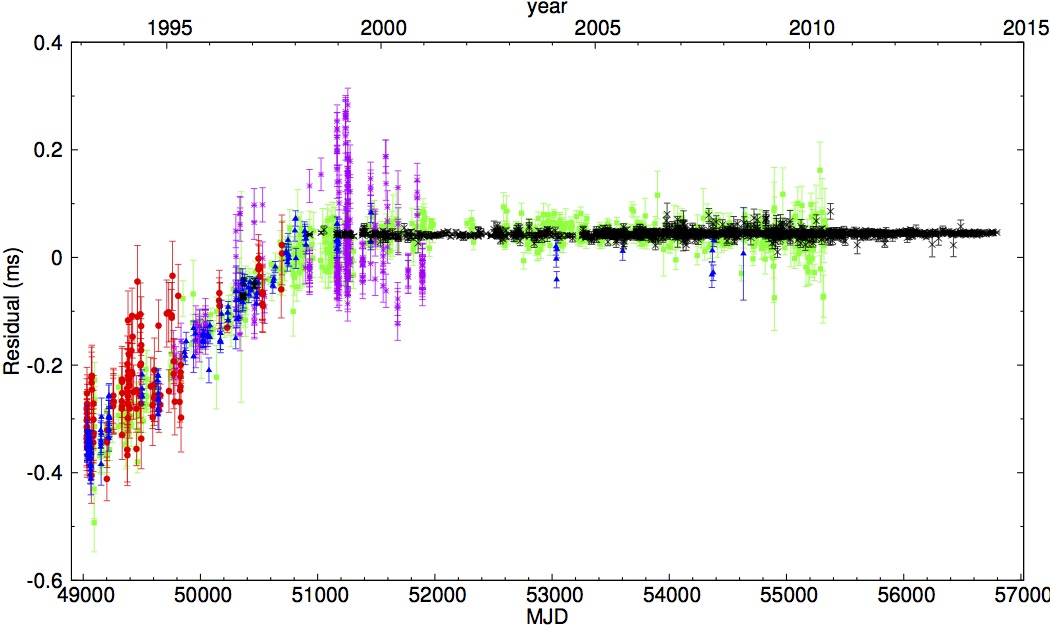Daily Image
09-08-2016A glitch in a millisecond pulsar
| Submitter: | Gemma Janssen |
| Description: | In the hunt for low-frequency gravitational waves, the European Pulsar Timing Array (EPTA) collaboration is always looking for more data to include in their timing solutions. Both timing precision as well as a long total baseline are important to get the best results. For several pulsars we have included data from Jodrell Bank (precluding our EPTA data release by Desvignes et al. 2016) to extend the timing baseline to cover earlier epochs. Surprisingly, as can be seen in the figure, for PSR J0613-0200, the early data did not line up with the very stable EPTA timing solution which used data from WSRT, Jodrell Bank, Effelsberg and Nancay, covering the period between 1999-2015. A careful comparison with other pulsars to exclude instrumentational issues, and adding early data from the Effelsberg EPOS instrument proved that this must be a pulsar-intrinsic effect: we found a micro-glitch in a millisecond pulsar! The figure shows the timing residuals for PSR J0613-0200. Different observing systems are shown in different colours. The timing model does not accurately predict the arrival times before March 1998 (MJD 50888), due to an unmodelled glitch occurring shortly before the epoch over which the EPTA ephemeris (1999-2015) was derived. A glitch is a sudden spin-up of the pulsar and is believed to be caused by transfer of angular momentum from the superfluid interior of the neutron star to its solid crust. This is the second glitch ever found in a millisecond pulsar, and moreover is the smallest glitch known to date showing a change in the rotational frequency of the pulsar of only 8E-10Hz. This result is in particular interesting as this pulsar is also used as an element in a pulsar timing array, with which we ultimately hope to detect gravitational waves. Having a glitch in one of our most stable pulsars was worrying at first, but we were able to prove that including the glitch in the timing model did not affect the long-term quality of this pulsar. Our paper can be found at: Mckee, Janssen et al. 2016; http://adsabs.harvard.edu/abs/2016MNRAS.461.2809M. |
| Copyright: | James McKee, Gemma Janssen |
| Tweet |  |
